Frank Gehry Is Back
-
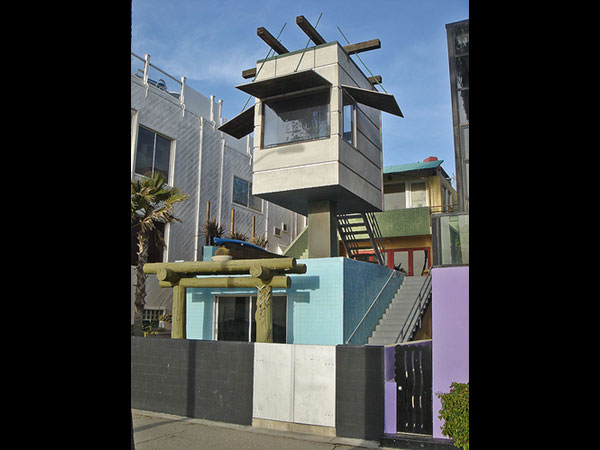 Venice Beach House by Frank Gehry, via CREDIT: Wikipedia. This image is licensed under the Creative Commons Attribution 2.0 Generic license.
Venice Beach House by Frank Gehry, via CREDIT: Wikipedia. This image is licensed under the Creative Commons Attribution 2.0 Generic license.Although the New World Center in Miami Beach is designed by Frank Gehry, it is not a Frank Gehry building. Let me explain. Following his success with the Bilbao Guggenheim museum, Gehry churned out so many projects that he was in danger of becoming a sort of international franchise, the architectural equivalent of Wolfgang Puck. While he could still produce a first-class building such as Disney Hall, the creative spark that characterized his early work (such as this 1984 house in Venice Beach, right) seems to have been replaced by an obligation to live up to his bad-boy public image. Now the spark is back. Challenged by a creative client, a complicated program, and a stimulating site, the 81-year-old architect has produced his best work in years.
-
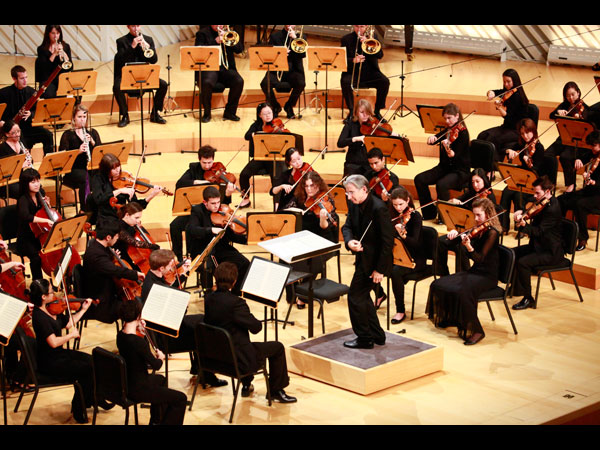 Michael Tilson Thomas conducts New World Symphony in CREDIT: A Schubert Journey, Jan. 27 © Rui Dias-Aidos.
Michael Tilson Thomas conducts New World Symphony in CREDIT: A Schubert Journey, Jan. 27 © Rui Dias-Aidos.The creative client is the conductor Michael Tilson Thomas. Two decades ago, he founded the New World Symphony, an orchestral academy to prepare young, gifted music-school graduates for the grueling world of professional music-making. The academy was housed in an old movie theater in South Beach, and several years ago, when the NWS outgrew its quarters and needed a new home, Tilson Thomas turned to his friend Gehry. They had known each other a long time—the architect baby-sat the musician when he was an 8-year-old piano prodigy in Los Angeles. That was almost 60 years ago. Today, Tilson Thomas is a seasoned conductor, the music director of the San Francisco Symphony and principal guest conductor of the London Symphony. He has also taken over the cultural role once held by Leonard Bernstein, becoming the public voice of classical music. In the New World Center, Gehry has provided Tilson Thomas with the means to extend that voice still further.
-
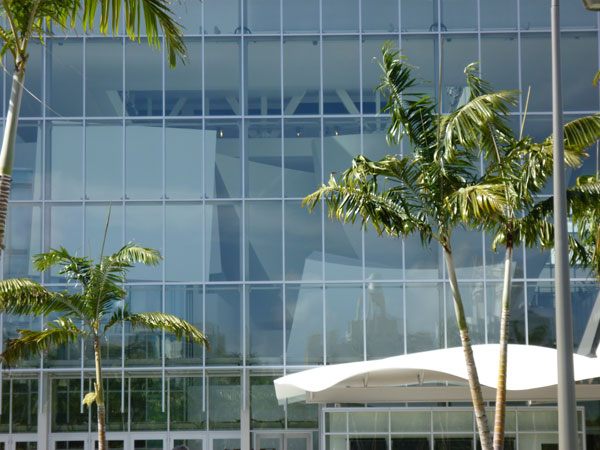 Photograph by Witold Rybczynski.
Photograph by Witold Rybczynski.The complicated program required a variety of musical facilities for the 90-odd students, or "associates," as they are called. In addition to a 756-seat concert hall for the full orchestra, there is a large multipurpose room that doubles as a second performance space, four ensemble rooms, percussion studios, rehearsal spaces, a music library, and two dozen individual practice rooms. (Invisible, although equally important, are broadband Internet2 connections throughout the building, to universities and conservatories around the world.) Gehry's solution was a higgledy-piggledy pile of large and small volumes—no surprise there—but unexpectedly he placed the pile inside a rather staid glass-and-concrete box. This was not, I think, a matter of economics, for the $160 million budget would have permitted a more dramatic building. Rather, it was Gehry shifting his priorities and producing, at least on the exterior, a building of almost Classic restraint.
-
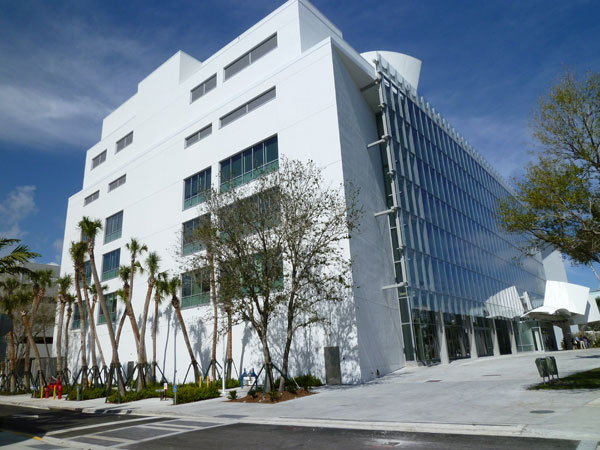 Photograph by Witold Rybczynski.
Photograph by Witold Rybczynski.The site of the New World Center is two city blocks, previously a municipal parking lot, in downtown South Beach. Gehry is not generally known as a contextual architect, but rather than impose himself on his surroundings, he chose to adapt to Miami Beach's predominantly white architecture. His concrete box is sandwiched between a (Gehry-designed) parking structure and a 2.5-acre park. The music academy offers a decidedly low-key face to the street, and the side facing the park is only slightly more dramatic, with a large glass screen draped across the front of the building.
-
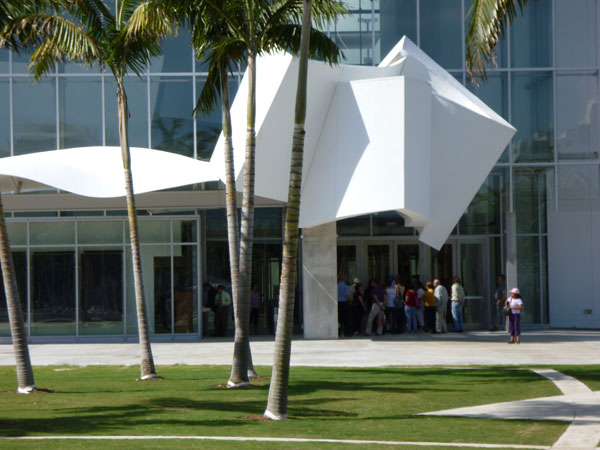 Photograph by Witold Rybczynski.
Photograph by Witold Rybczynski.Gehry is an idiosyncratic form-maker, perhaps the most complex personality since the Italian baroque architect Francesco Borromini, and he couldn't resist a little creative confusion. While the white forms are paper-and-clear-adhesive-tape writ large, they perform traditional architectural functions: a marquee that signals the building's main public entrance, and shade from the Florida sun.
-
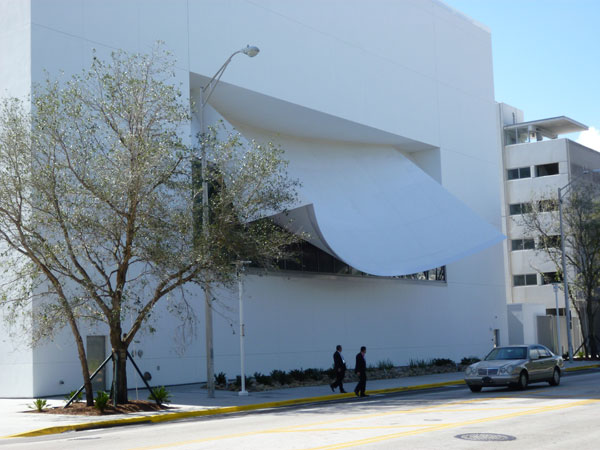 Photograph by Witold Rybczynski.
Photograph by Witold Rybczynski.The only false move on the exterior, to my eye, is a giant awning that masks a large window looking out of the concert hall and curls dramatically over the sidewalk on 17th Street. It is described as a "sunshade," despite being on the sunless, north side of the building. This gratuitous gesture feels more like a billboard announcing Gehry's presence than an integral part of the building.
-
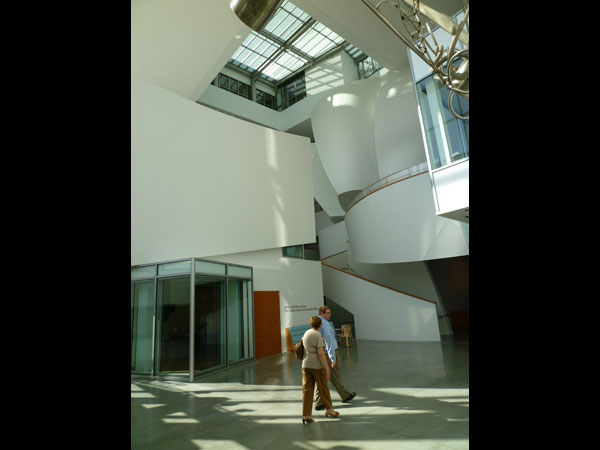 Photograph by Witold Rybczynski.
Photograph by Witold Rybczynski.The concert hall and the multipurpose room are used for public performances and are connected by a soaring public lobby. The lobby has a sense of ethereal illumination. The Escheresque jumble of forms is bathed in natural light from an overhead glass roof. The teaching spaces are functionally separate from the public uses, but in many places visually connected. For example, the visitor arriving from the parking garage crosses a bridge that overlooks the passage that the young musicians use to enter the hall. Conversely, many of the academy areas look down into the public lobby.
-
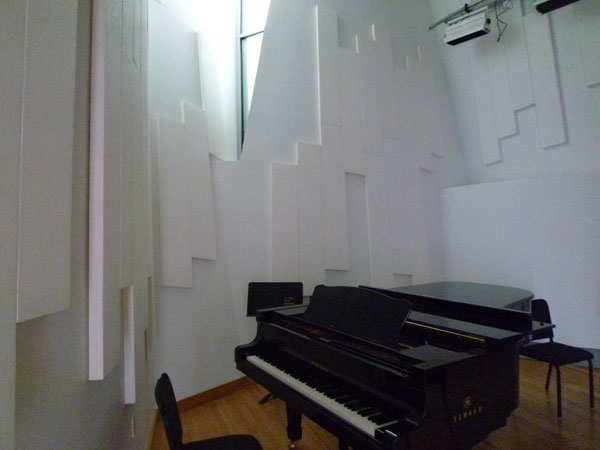 Photograph by Witold Rybczynski.
Photograph by Witold Rybczynski."Frank said that the more we told him what we needed, the better the building would be," says Howard Herring, the president and CEO of the New World Symphony, a trained musician whose office has a grand piano in the corner. Client and architect worked together for two years to create this unusual building, part educational facility and part performance space. The close collaboration is visible in the chamber ensemble rooms (right). Instead of being neutral rooms covered with acoustical tile, they are tall, quirky spaces with individual character—and natural light.
-
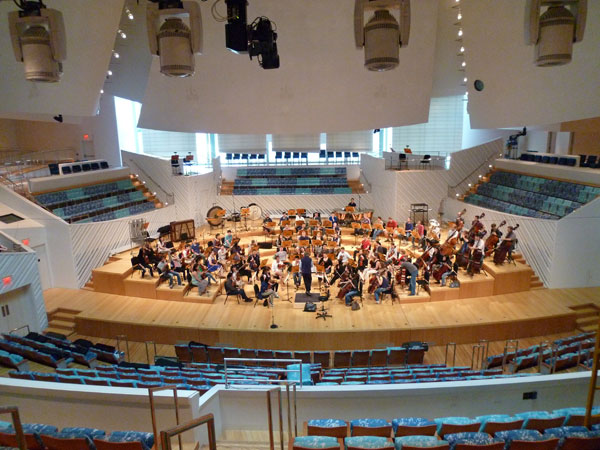 Photograph by Witold Rybczynski.
Photograph by Witold Rybczynski.The audience in this charmingly intimate concert hall surrounds the musicians. Curved acoustic sails above serve as projection screens, a reminder of the orchestra's earlier home, whose old movie screen was sometimes used to provide graphic accompaniment to the music. In the new hall, a dozen projectors permit video, still images, and other visual information to augment the performance. Daylight enters the room from a hidden, overhead skylight as well as through the panoramic window. The morning I visited, Tilson Thomas was rehearsing the orchestra in a largely empty hall (right), but the sound—to my untrained ear—was wonderful. Gehry worked with Yasuhisa Toyota, the same acoustician as on Disney Hall. New York Times music critic Anthony Tommasini found the acoustics occasionally overpowering, but expected that this would be resolved as the orchestra adjusted to its new home, and wrote of the room: "The clarity of the acoustics was a boon to the precise playing. Every note in the rustling violin runs came through, every stroke of the swelling timpani rolls was audible."
-
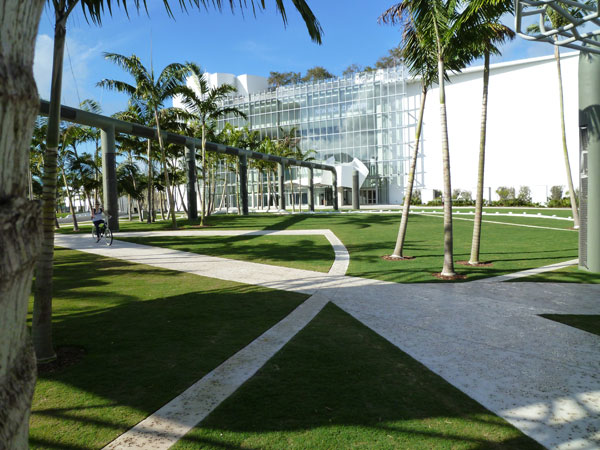 Photograph by Witold Rybczynski.
Photograph by Witold Rybczynski.It is said that Gehry originally designed the park outside the center, but that the City of Miami Beach found the project too expensive. I don't know if that's true, or what his design was like, but it was surely more congenial than the awkward self-consciously arty landscape, created by West 8, a Dutch firm. Loopy (Gehryesque?) stone stripes criss-cross the Bermuda turf. A large part of the park is, in effect, a viewing area. The white expanse of wall serves as a giant movie screen at night, when videos of concerts are simulcast for outdoor listeners (the hall is equipped with 10 robotic cameras that film the concerts). At other times the screen is used for outdoor movies. The rather clumsy structure that looks like an elevated petroleum pipeline contains 167 speakers as well as lights.
-
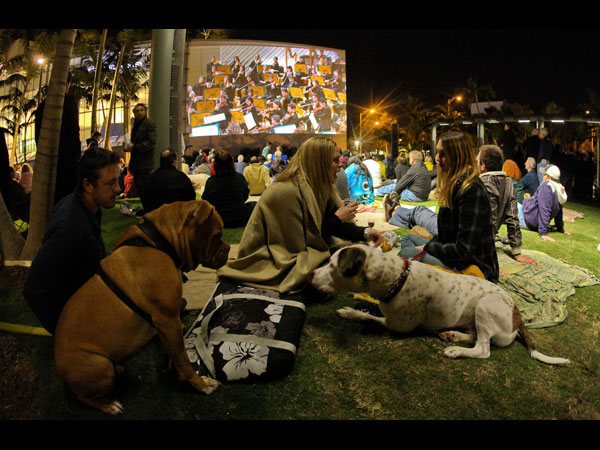 New World Center Wallcast™ of the New World Symphony concert in Miami Beach SoundScape, Jan. 28 © Tomas Loewy. (Note: The New World Center is designed by Frank Gehry/Miami Beach SoundScape is designed by West 8.)
New World Center Wallcast™ of the New World Symphony concert in Miami Beach SoundScape, Jan. 28 © Tomas Loewy. (Note: The New World Center is designed by Frank Gehry/Miami Beach SoundScape is designed by West 8.)Downtown Miami's hulking performing arts complex, which includes a concert hall as well as an opera house, looms over its surroundings. Performing arts centers have grown as large—and sometimes as cheerless—as sports facilities. They may present the best musicians in the world, but for many these are inhospitable surroundings for listening to music. The players at the New World Symphony may not be the best in the world—yet—but the New World Center, whether you are listening inside the building or out, offers a different sort of musical experience: casual, personal, and intimate. It is said that classical music is losing its audience. This small but ambitious building just might be a model for how to get that audience back.